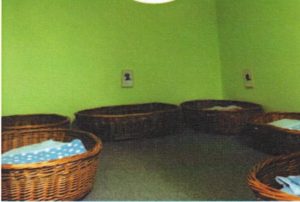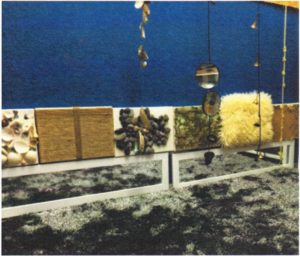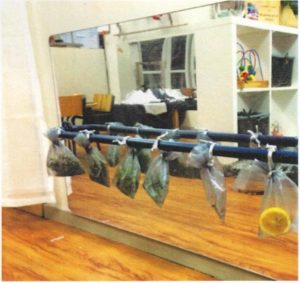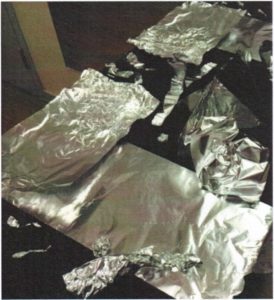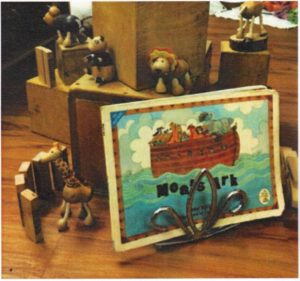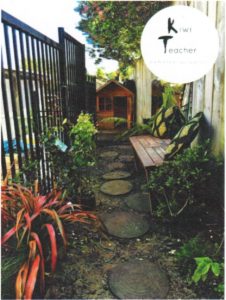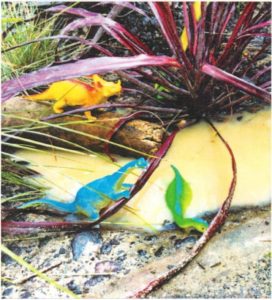
A glimpse into the classroom of Elise Hopkins
When early years educators speak of the field in a comprehensive context, it is impossible to ignore the trends and accomplishments of settings in the global south. New Zealand, a gem in Oceania, gently leads the way with their quiet insistence to connect, support and develop the family unit.
New Zealand’s Ministry of Education includes an Early Childhood Education Department guided and protected by national legislation. In the last 20 years, the country has developed Te Whairiki which is a framework for supporting children’s early learning within a sociocultural context, emphasising the learning partnership between teachers, parents, children and family. (Curriculum and Learning, 2015) Licensing and regulatory requirements guide the classroom practice and administration of early childhood settings. This is not unusual; many countries have regulations. New Zealand’s regulations stand out because they focus on the relational aspects within the entire centre. So it’s no surprise that creative, attuned environments emerge out from such a strong foundation. One such setting is 4Kids & Whanau Centre. Here’s a bit about the centre:
Centre Focus:
We believe our role goesfar beyond caring for and nurturing children, we endeavor to help children reach their fullest potential while in our centre. We aspire to empower children by encouraging independence, confidence and a love of learning through play.
Hours:
7:30 a.m. to 5:30 p.m
Ages Served:
Three months until school age
Curriculum:
Integrated Christian values within a Reggio Emilia approach
Setting arrangement:
Two classrooms – Pipi Whanau (3 months – 2.5 years)
Paua Whanau (2.5 years – 5 years)
Organisational Support:
A not-for-profit community centre affiliated with Glenfield Baptist Church
Website:
WWW-4kids .org.nz
As in many countries, New Zealand posts inspection reports on the public website of the Education Review Office. I was impressed by two paragraphs in the report:
The centre’s focus is on supporting families in the local community, and partnering with whanau to provide care and education for children in a positive Christian environment. Whanau appreciate the inclusive, welcoming and homely atmosphere in the centre. The centre’s philosophy , environment and programmes are also strongly influenced by the Reggio Emilia approach to teaching and learning. Teachers’ regular reflections on their practice and on learning outcomes for children clearly relate to these curriculum priorities.
Children enjoy ready access to a wide selection of resources in beautifully presented play areas that feature natural and creative materials and prompt independent exploration. Adults respond to and support children’s play ideas and foster literacy and numeracy learning, particularly in the context of investigation projects. Teachers could now make their responsiveness to individual children ‘s interests more visible in programme planning and the environment. (Smith, 2015)
One evidence of the reflection of the teachers is the blog, Kiwi Teacher, authored by Elise Hopkins, a teacher at 4Kids and Whanau Centre (http://kiwiteacherblog.blogspot.com /). Elise also shared her reflections on a Facebook page, linked to her blog (https://www.facebook.com /kiwiteacherblog). Elise posts with clarity and winsomeness, capturing the happenings at the centre as an observer, as a supporter of a child’s inquiry, but always as a provocateur. The words provoke and provocation appear regularly in her posts which speaks of the role of the teacher to inspire curiosity and exploration.
Her philosophy of teaching comes through in the details of the environment she creates for the children. With her generous permission, we share these photos, with captions by Elise.
Indoor Spaces
I have only recently moved in to this room and alongside my team we have spent the last few months organising and rearranging our classroom. In a few weeks it seemed our class had evolved from being dominantly a toddler room to an infant and toddler room as a few of the older children moved through to the preschool two very young infants started. We really needed to rethink the space to accommodate pretty much all ages and stages from 3 months – 2.5 years. At the moment we have very young infants, crawlers and toddlers. It can be a challenge to create an environment that can provoke and inspire all these different children but we have given it a good go and it will continue to evolve!
We believe children should have freedom to move so we avoid placing children into things they are unable to get out of themselves. The Pipi Whanau does not have any cots, highchairs or swings. We use these baskets as an alternative to cots. Each child has a frame above their basket with a photo of them and their name. Our children have ownership over their space which we believe creates a sense of security and familiarity for the children during rest and sleep times.
We developed this area for our infants, the aim was to create a sensory space. The hanging materials are low
enough that the infants can reach and grasp them. They all make different sounds and reflect the light in various
ways. The tactile canvases are interesting for children as they learn to crawl and sit. The mirrors are low so infants can see themselves play during tummy time. Our toddlers have been just as interested in this area and use it in very different ways to the infants. They love to walk through the hanging materials and touch the canvases.
As we all know, young children are very sensory learners. We want our classroom to reflect the sensory nature of children. These are sensory bags. We refresh them every so often with new and different natural materials. A variety of herbs, lemon, garlic and cinnamon are in these ones. The children are able to engage their senses especially their sense of smell.
Tinfoil is a great medium to use with infants and toddlers. It is easy to manipulate and tear and it has some qualities that are very interesting to children such as the way it reflects and captures light. Our infants have been fascinated by the sound this material makes when they scrunch it, pat it and kick it with their feet.
Noah’s Ark provocation. This is a familiar story for our children and perhaps is one that may in spire their play in the construction area …
This space used to be completely unused, it was just a retaining wall. Jess who has recently started a new adventure came up with the idea to allow the children to access this area by putting a ladder up to it and installing a fence. The children now have a space where they can feel they are away from teachers, which is so important. It is amazing.
As you can see, the drainage issue hasn’t been completely resolved but the puddles provide nice little habitats for our dinosaurs!
It was really important to me to create a garden that challenged all the children in my classroom including crawlers, the just walkers and the runners. The mound in the middle and the stepping stones have created that challenge! Now our children can experience different terrain and slope while engrossed in nature!
A Final Thought
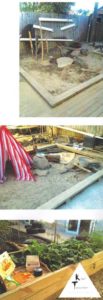 A committed and passionate teacher has something to share with the broader early years community. Elise’s passion and commitment to children shines through her work, giving all of us an opportunity to learn from her investment.
A committed and passionate teacher has something to share with the broader early years community. Elise’s passion and commitment to children shines through her work, giving all of us an opportunity to learn from her investment.
Elise has been working at 4kids since 2007, developing a deep passion for teaching over this time. She is currently a provisionally registered teacher with a Bachelor of Education (Teaching) from the University of Auck land . She started off working in a teacher assistant role after school when she was 16 and has moved into a leadership role. Her second passion is art, having completed a certificate in art and design before starting her Bachelor of Education, so the creative nature of teaching make this job perfect for her. She gets very excited about children ‘s creative endeavours and supporting them in these. She holds a powerful image of the child as independent, capable and competent contributors to society. To hold such an image of the child means having great faith in children and their abilities. She endeavours to provide a programme that is empowering for children by encouraging independence, confidence and a love of learning through play and strong relationships. She is a creative type and her blog is an outlet to share; she also paints and takes photographs.
Take a moment to visit Elise’s blog and like her Facebook page.
What about you?
Reflection Questions
What can others learn, by observation, about your passion and commitment to young children?
In what ways are you intentional about provocation in your environment?


